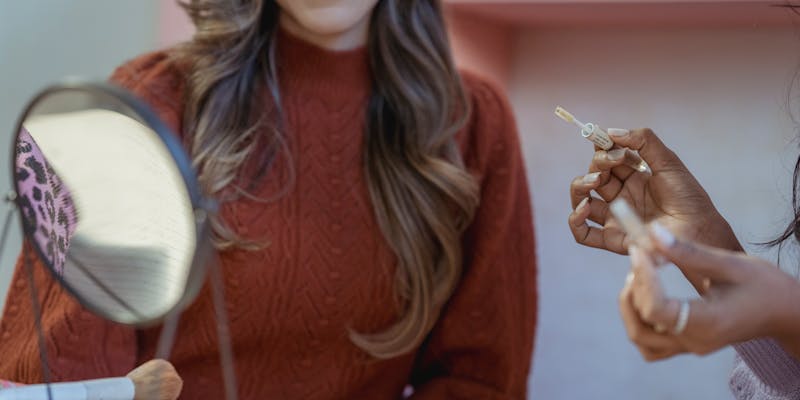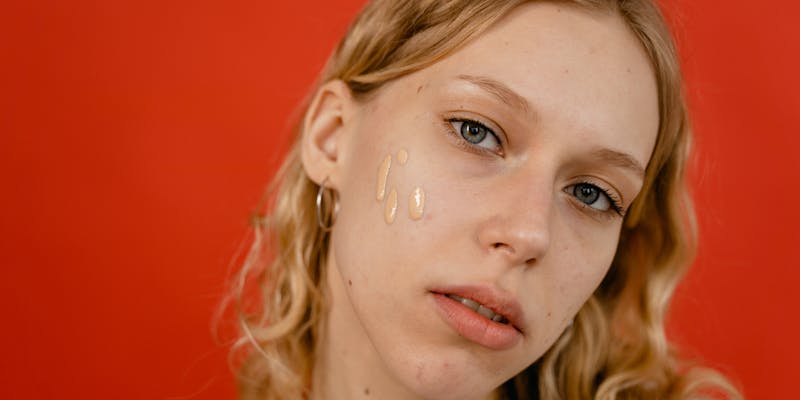The Top 10 Essential Commandments for Perfect Concealer Application
Mar 09, 2024 By Nancy Miller
Do you want to permanently get rid of irritating pimples and fatigued eyes? Look no further! Concealer is your secret weapon for brightening your eyes, hiding dark circles, and covering up blemishes. But are you using it correctly? To truly make the most of your concealer and achieve a flawless complexion, it's important to follow some unbreakable rules.
Here are 10 essential rules for using a concealer that will have you looking flawless in no time. These rules ensure that you choose the right shades for your skin tone, apply the concealer in the correct areas, and blend it seamlessly for a natural-looking finish.
10 Must-Follow Commandments of Concealer Perfection
Here is a list of the top 10 commandments every concealer lover must know.
Always Prep Your Skin
You should always adequately prep your skin before applying concealer. Using your ring finger, lightly pat the moisturizer over your skin in the vicinity of your eyes to begin. In addition to providing a smooth foundation for your concealer, this helps moisturize your face and keep it from settling into dry areas or fine wrinkles.
To guarantee the finest effects, let the moisturizer absorb for a few minutes before applying concealer. To further hydrate and prepare your skin before applying concealer, think about using a primer.
Use a Loose Powder
One of the most important steps in setting and guaranteeing the longevity of your concealer is to use loose crystalline powder. Transparent powder is a lightweight, loose powder that sets makeup without highlighting flaws, unlike pressed powder, which can get trapped in fine lines and creases.
It gives your skin a matte finish without being cakey, making it look perfect and shine-free. To seal in your concealer and keep it from creasing, lightly dust the area with loose powder after applying it.
Recognize the Seasonal Differences
It's important to understand that seasonal variations and sun exposure can cause your natural skin tone to alter throughout the year. Your complexion may be darker in the summer than it is in the winter when your skin is typically lighter due to sun exposure.
Makeup experts advise keeping two different shades of concealer on hand, one for your summer skin tone and another for your winter complexion, to account for these variations. Having two hues on hand allows you to mix and match them to produce a unique color that looks well on your complexion when the seasons change.
Select the Right Concealing Brush
Selecting the appropriate concealer brush is crucial for attaining a perfect application while upholding hygienic standards. To avoid bringing in dirt and bacteria, avoid using your fingertips there. For accurate application on imperfections and inaccessible places like the corners of your eyes, use a tapered brush.
To guarantee consistent coverage on larger surface areas, use a brush that is packed tightly. Do not forget to clean your brushes routinely in order to avoid bacterial accumulation. Apply three tiny dots of concealer under the eyes using a synthetic concealer brush rather than your fingers. Gently blend the concealer with your fingertips to create a seamless appearance.
Get Multiple Shades
Selecting the appropriate concealer requires knowledge of color theory and how various shades can be used to treat different issues. Peach-toned concealers are good at hiding brown or yellowish circles beneath the eyes, while yellow-toned concealers are good at balancing out bluish or purple ones. The best concealer to use to cover up redness or imperfections is one that matches your skin tone.
Prioritize the Lightning
When using concealer, ideal lighting is essential for achieving a perfect match to your skin tone and seamless blending. The most realistic way to see how your concealer will appear in various conditions is to use natural light. Apply concealer in a well-lit area or next to a window for natural light to avoid falling victim to the bathroom lighting trap.
Follow the Correct Order
To get a perfect look, especially when using concealer, it's important to keep your makeup regimen in the correct order. Applying concealer should ideally be done after using foundation, BB cream, or tinted moisturizer, though there are no hard and fast rules in this regard.

This arrangement guarantees that your concealer stays put and offers the best coverage possible without smudging or undermining the potency of your other face makeup items. Use a primer to prepare your skin, a smooth foundation to balance out your tone, and concealer to draw attention to the areas that need more coverage in order to follow the right order.
Understand When Not to Apply Concealer
The use of concealer should be done with caution in some areas. The concealer should not be applied directly to your eyelids as this might cause them to wrinkle and look heavy. Likewise, avoid hiding undereye bags with makeup because it may make them more noticeable rather than less noticeable.
Rather than concealing the undereye bags with heavy foundation, use a highlighting cream on the inner corners of the eyes and directly beneath the bags to add brightness.
Choose the Right Product
For optimal effects, select the appropriate concealer for your skin type. Choose a very blendable concealer for dark circles to help disguise bags beneath the eyes and give the skin tone under the eyes an even tone. Consider using a 2-in-1 concealer and corrector that is loaded with antioxidants to target spots and irregularities on the surface of your skin if you're dealing with zits or pimples.
Use Concealer for Highlighting
To bring attention to your best features, use concealer as a highlighting technique. A concealer can provide a glamorous touch if applied in a triangle beneath your eyes, starting from the inner corner and going all the way up to the tip of your nose and terminating at the outside edge of your cheekbones.

The Bottom Line!
In conclusion, using concealer doesn't have to be complicated. By following these 10 rules, you can easily brighten your eyes, cover dark circles, and hide pimples. Whether you're getting ready for school or a special event, knowing how to choose the right concealer shades and apply them correctly will help you achieve a flawless look.







